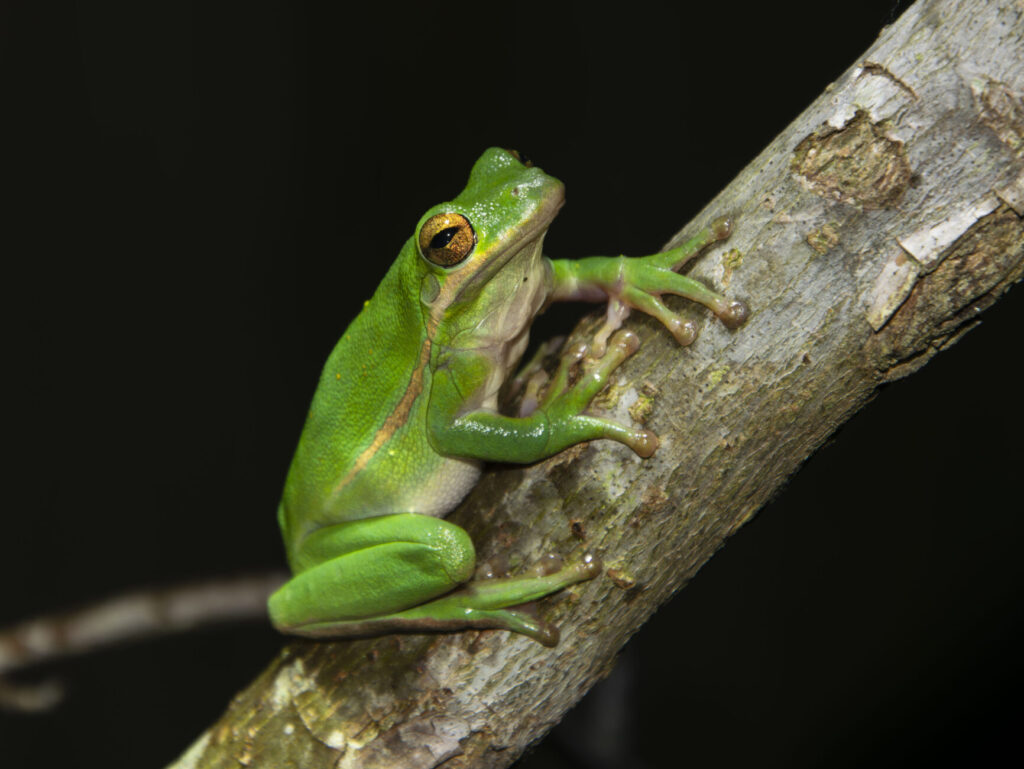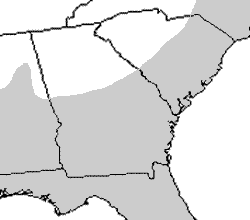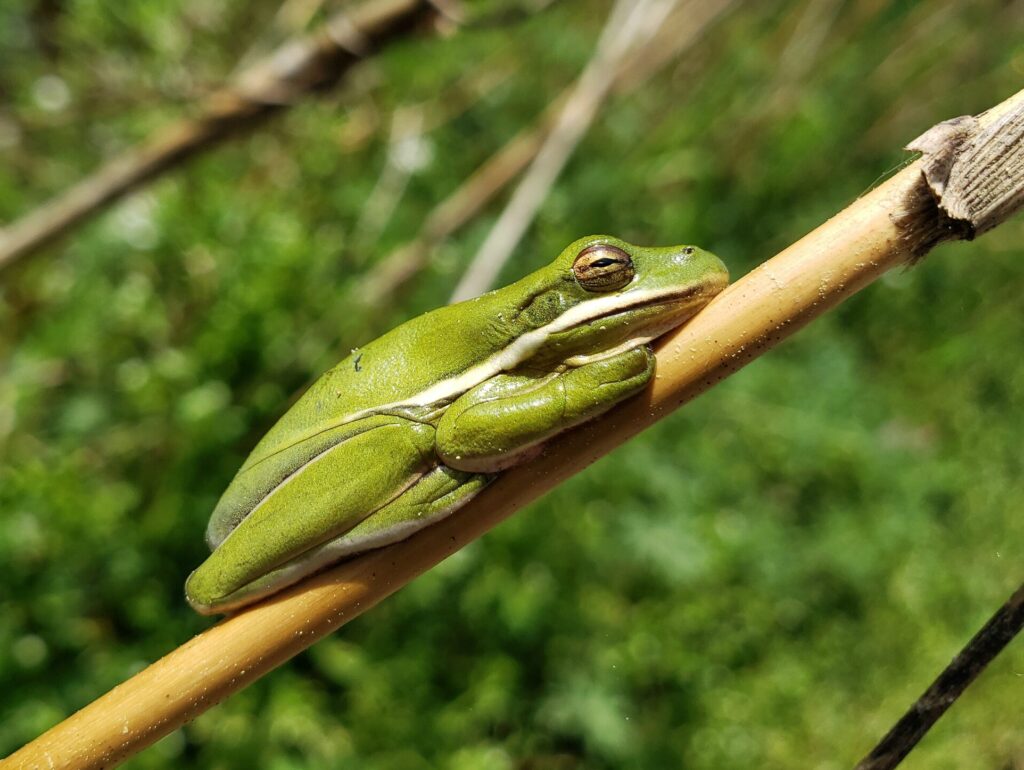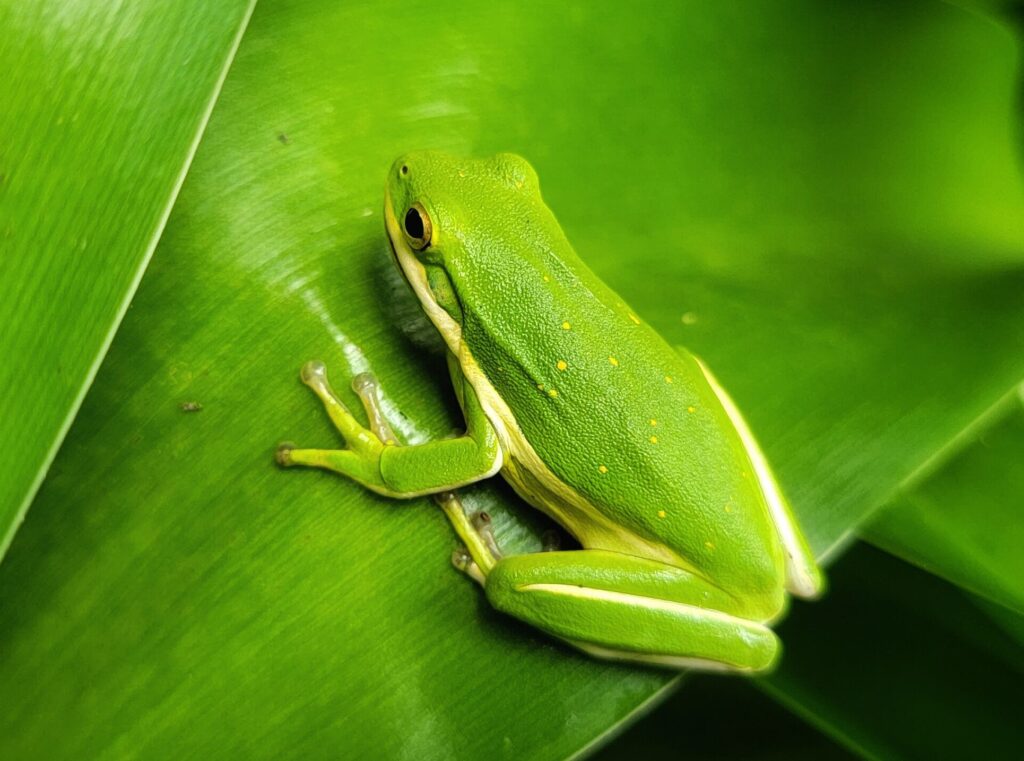Green Treefrog (Hyla cinerea)
Green Treefrog (Hyla cinerea)



Green Treefrog call
Description: A medium-sized treefrog (3.2–5.7 cm; 1.25–2.25 in) with long limbs, slender digits, and expanded adhesive toe pads. Dorsal coloration is typically bright green, though shade may vary, often with a distinct white, yellow, or occasionally iridescent stripe running laterally along each side of the body. Stripe length and expression vary geographically and may be absent in some individuals. Yellow flecking on the dorsum is common. Males are generally smaller than females.
Range and Habitat: It occurs throughout the southeastern United States, but is primarily restricted to the Coastal Plain. It is abundant in swamps, weedy ponds, lake margins, and other vegetated wetlands. In recent years, established populations have spread into the Piedmont, likely through the transport of ornamental plants and pine straw. Verified records of introduced populations have increased in northern Georgia and South Carolina since 2008.
Habits: An arboreal species that spends much of its life in vegetation. Frequently encountered around porch and patio lights on warm, rainy nights, where they exploit concentrations of insects. Primarily nocturnal. During the breeding season (March–October), males call from emergent vegetation, floating mats, or perches up to 5 m high along pond and swamp margins. More tolerant of fish presence than many other anurans in the region.
Call: A loud, nasal “reeenk, reeenk, reeenk.”
Conservation Status: Listed as Least Concern by the IUCN, owing to high densities, broad distribution, and stable populations.


